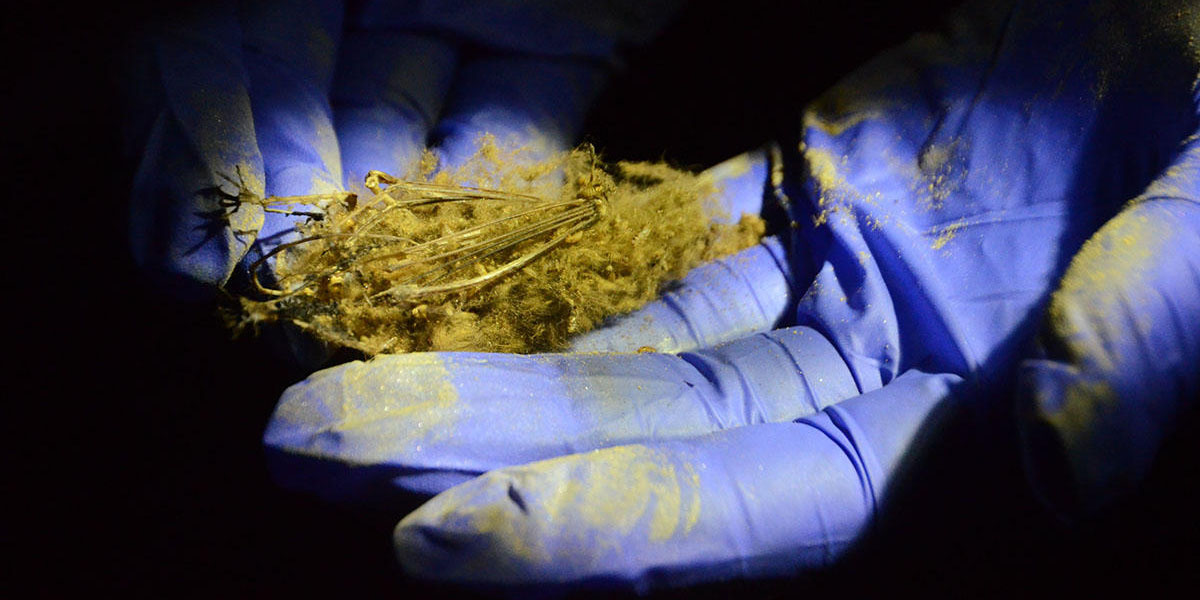Bat Week: Ga. State Scientist Leads Research On Bat Disease

Brenna Beech / WABE
Halloween is the last day of National Bat Week. Wildlife organizations and agencies are encouraging people to build bat houses, and they’re calling attention to threats to bats, including a fungus that is decimating bat populations.
White-nose syndrome is caused by a fungus that infects some species of bats while they’re hibernating. It wakes them up; then they starve or freeze to death. It’s killed around 6 million bats since it began spreading in North America in 2007.
A team that includes Georgia State University scientists is making some progress fighting the fungus. Earlier this year, microbiologist Chris Cornelison released several bats that had been successfully treated for it.
He and his colleagues are preparing to do more tests this winter in a fake cave in Tennessee.
“It’s a nice midpoint between the lab and the field,” he said, “where we’re able to assess the efficacy of some of these treatments in very real world conditions, but still with the level of monitoring and control that is similar to what you’d be able to do in the laboratory.”
The GSU team has developed two approaches. One is to use a bacteria, Rhodococcus rhodochrous, that emits compounds that can keep the fungus from spreading. The other treatment is inspired by the bacteria, but instead uses anti-fungal chemicals.
“There’s not a single tool that’s going to turn the tide in white-nose syndrome,” said Cornelison. Other scientists are working on several other approaches. Cornelison said they’ll have to use many options to try to save the species of bats that are affected by the fungus.
It’s killed so many bats, Cornelison said in some places it has become a challenge to even try the treatments because there aren’t enough bats left to test on. Now, he said, a lot of the work focuses on learning from the devastated bat populations in the eastern United States, to try to slow the spread of the fungus as it moves across the Midwest.
9(MDAxODM0MDY4MDEyMTY4NDA3MzI3YjkzMw004))






